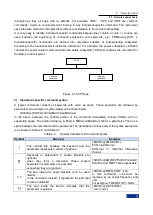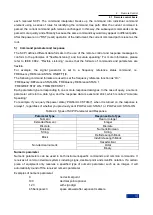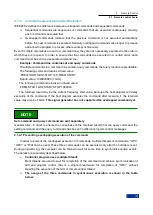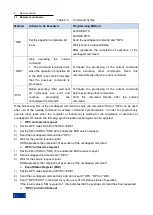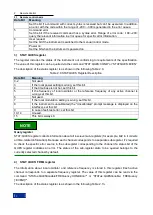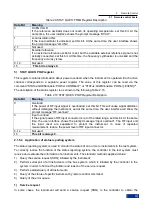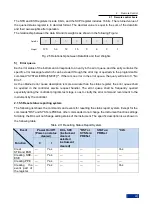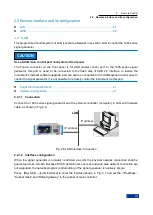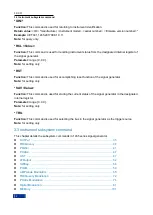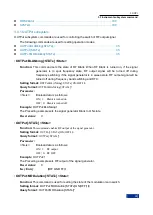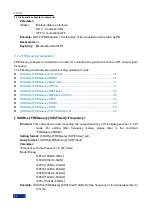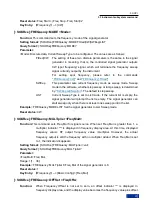
2
Remote Control
2.1 Remote control basis
22
Data Bit
Meaning
Set the bit if a command with correct syntax is received but can‘t be executed. In addition,
an error with the code within the range of -200 ~ -300 is generated in the error queue.
5
Command error
Set the bit if the received command has a syntax error. Range of error code: -100~-200;
query the relevant information in error queue for specific error information.
6
User request
Set the bit if the instrument is switched to the manual control mode.
7
Power on
Set the bit when the instrument is powered on.
3) STAT: QUES register
The register includes the status of the instrument not conforming to requirements of the specification.
The val
ue of this register can be queried via the command ―STAT:QUES:COND‖ or ―STAT:QUES:EVEN‖.
The description of the status register is as shown in the following Table 2.9.
Table 2.8 STAT: QUES Register Description
Data Bit
Meaning
0-2
Not used.
3
If the local power setting is wrong, set this bit.
4
If the time base is not hot, set this bit.
5
If the frequency of local oscillator or the reference frequency of any active channel is
wrong, set this bit.
6
Not used.
7
If the local modulation setting is wrong, set this bit.
8
If the instrument is uncalibrated (the ―Uncalibrated‖ prompt message is displayed on the
interface), set this bit.
9
In case of self-test error, set this bit.
10-14
Unused.
15
This bit is always 0.
Query register
STAT: QUES register collects information about all low-level sub-registers (for example, bit2 in it collects
all time-related information). Because each channel corresponds to a separate sub-
register, it‘s required
to check the specific error source in the sub-register corresponding to the channel if a status bit of the
QUES register indicates an error. The status of the sub-register state to be queried belongs to the
currently selected channel by default.
4) STAT: QUES: FREQ register
The information about local oscillator and reference frequency is stored in this register. Each active
channel corresponds to a separate frequency register. The value of this register can be read via the
command ―STATus:QUEStionable:FREQuency:CONDition?‖ or ―STATus:QUEStionable: FREQuency
[:EVENt]?‖.
The description of the status register is as shown in the following Table 2.13.
NOTE
Содержание 1465 Series
Страница 1: ...1465 series Signal Generator Programming Manual...
Страница 2: ......
Страница 5: ......
Страница 39: ......
Страница 127: ......


